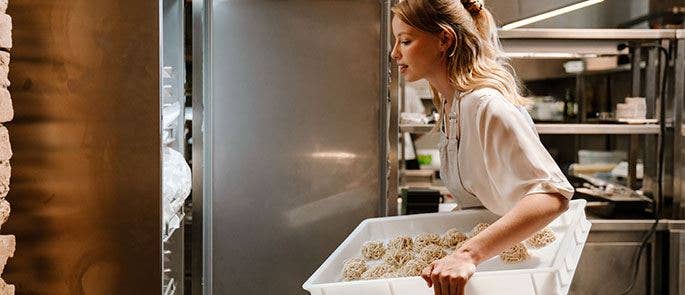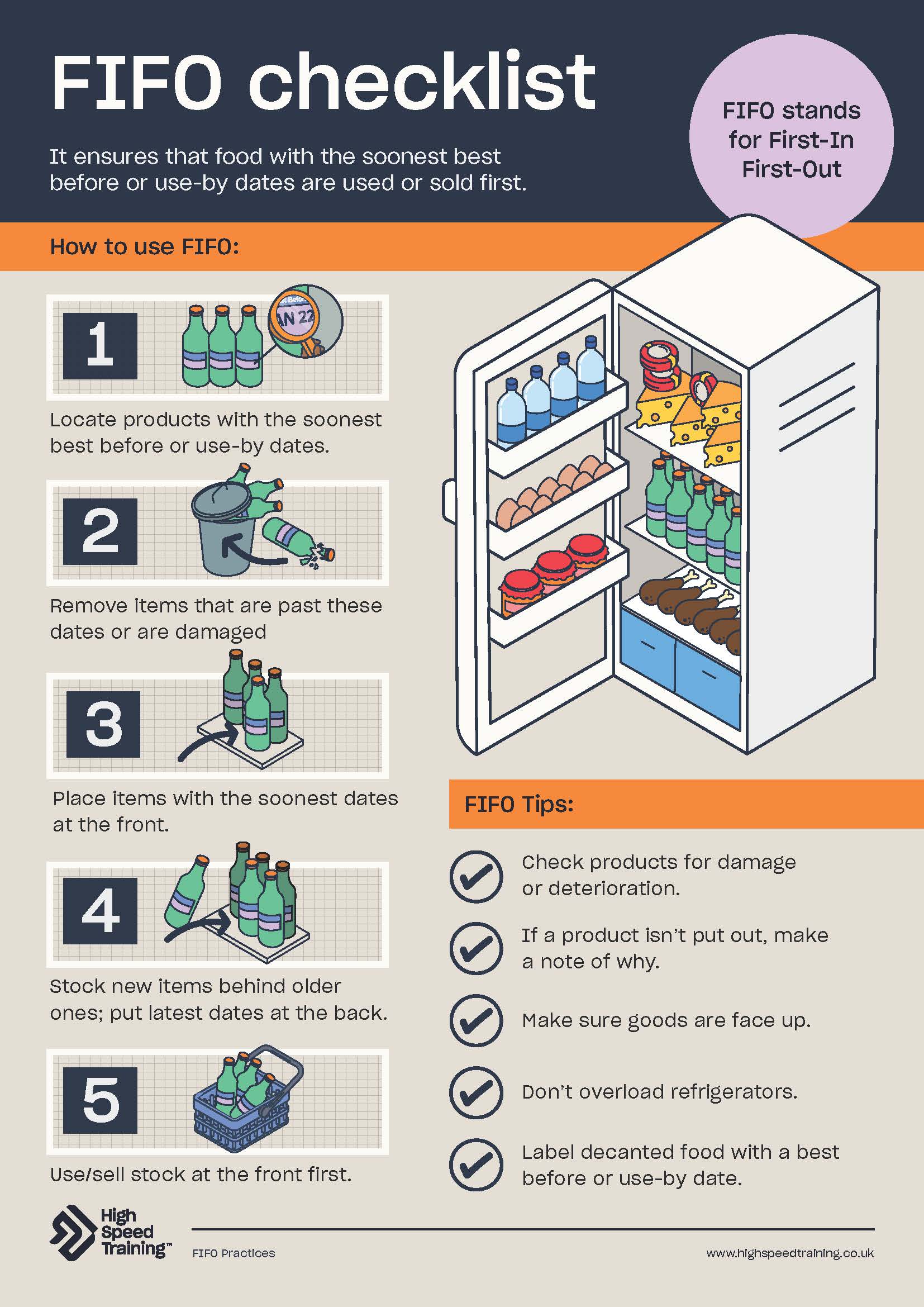Using a FIFO Food Storage System
From supermarkets to restaurants, manufacturing to catering, many different businesses manage high quantities of food on a daily basis. These businesses have a legal responsibility to handle food hygienically in order to keep customers and consumers safe. Along with practising high standards of good hygiene, an effective and efficient storage system such as the first in, first out (FIFO) method, can ensure food safety whilst boosting workplace efficiency.
In this article we will outline everything you need to know about using a FIFO storage system and explore why it can be beneficial to you and your business. We will also provide a free FIFO checklist for you to download.
What Does FIFO Mean in Food?
FIFO is a stock rotation system that stands for first in, first out. This means that foods with the soonest best before or use-by dates are stored at the front of fridges, cupboards and display shelves etc., whilst foods with the latest best before or use-by dates are stored at the back. Each time new supplies are stored, the stock is rotated and the newest items are placed at the back whilst the oldest items are kept at the front.

By keeping foods that will expire sooner at the front, the FIFO system ensures that this food is used first. This helps to reduce food waste as food is used or sold before it expires.
The FIFO Method
The FIFO method is a simple and efficient system which can be easily adopted by staff to ensure continued stock rotation.
The FIFO method follows 5 simple steps:
- Identify which products have the soonest best before or use-by date.
- Remove any items that are past these dates or are damaged.
- Place items with the soonest dates at the front.
- Place items with the latest dates at the back.
- Use or sell stock at the front first.
If food does not have a date on it, you must clearly label it so that the FIFO method can still be applied for its storage. This may involve copying the date from the original packaging if it has been decanted or checking with colleagues how old a product is and how long they think it can be kept for.

To maintain the efficacy of the system you must ensure that you apply it when restocking. This means rotating all stock every time you resupply and throwing away any food that has expired.
How Should a Food Worker Store Food Using FIFO?
To store food using FIFO a food worker should follow the steps above and ensure that they use/serve food with the soonest best before or use-by date first. They should also ensure that when restocking they carefully check the dates of each item and store accordingly.
Want to Learn More?
Our range of Food Hygiene courses, such as our HACCP Training course, provide you with the necessary knowledge to handle food hygienically and keep consumers safe.
Advantages of Using the First In First Out Method
The FIFO system is both simple to implement and advantageous for your business. Advantages of the first if, first out method include:
- Reduced waste – Using food in date order ensures that older food is used first and before it expires. This helps to reduce food waste caused by food not being used or sold in time which in turn can help to save money.
- Safer food storage – FIFO ensures that high standards of food hygiene are maintained and that food isn’t inadvertently left in the back of the fridge or cupboards to rot and possibly contaminate other food.
- HACCP compliance – Food businesses have a legal responsibility to be HACCP compliant. The FIFO system reduces the risk of consumers being served/sold expired food and stock rotation provides frequent opportunity for stock safety to be checked.
- Efficient stock management – The FIFO system can make food easier to locate quickly and also help to manage stock levels as you are able to see what stock needs to be replaced or resupplied and what stock you have ample quantities of.
- Preserves product quality – As items are stored in order of expiration, they are used within the ideal timeframe to enjoy peak product quality.

FIFO Checklist
The effectiveness of the FIFO system heavily depends on everyone in your business following the method. By encouraging this you ensure that stock is regularly rotated and checked for signs of expiration or damage that would make it unsafe to consume.
To help keep FIFO at the forefront of everyone’s mind, we have created a FIFO checklist that you can display in areas of high stock rotation and where staff will regularly see it, such as next to cupboards, fridges or even in the staff room.
The checklist covers the 5 steps of FIFO and also contains helpful tips to ensure that you are storing food safely and hygienically.
You can download and print our FIFO checklist below.
FIFO is a simple but effective stock rotation system that helps to reduce food waste and preserve product quality. Implementing the system and ensuring that all staff understand and follow it will help you to maintain high levels of food hygiene and safety.
Further Resources:
- Food Hygiene Rating Scheme Resource Pack
- 10 Ways to Reduce Food Waste in Your Restaurant
- What You Need to Know About Food Waste Separation
- Food Hygiene Courses












